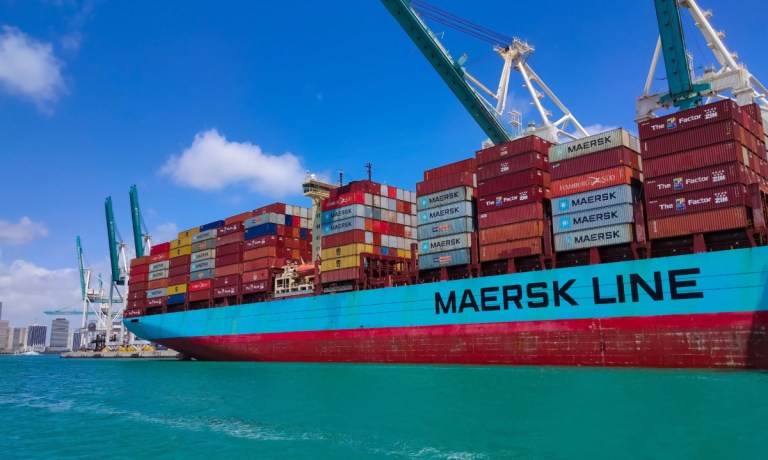
Contrary to widespread worries about a potential economic slowdown, shipping giant Maersk has reportedly seen no signs of a U.S. recession.
Judging by the demand for shipping containers, the amount of goods being stored before delivery or processing, and the number of purchase orders from importers — which are three good indicators of the strength of the economy — the company sees no signs of trouble, Maersk CEO Vincent Clerc told CNBC’s “Squawk Box Europe” Wednesday (Aug. 7).
Clerc added that Maersk has been surprised by the resilience of container volumes in recent years, that the company expects that to continue over the coming quarters, and that it sees no indication that the global economy is heading toward a recession, per the report.
This resilience has been driven in part by Chinese exports, which account for a growing share of the demand for shipping containers, Clerc said.
This news comes about nine months after Maersk reduced its headcount by some 10,000 positions over the preceding year as its revenue dropped due to lower freight rates and volumes.
Clerc said at the time: “Our industry is facing a new normal with subdued demand, prices back in line with historical levels and inflationary pressures on our cost base.”
In the fall of 2023, container shipping rates across all ship operators had fallen by as much as 90% since early 2022. Before that, during the pandemic, shipping clients like large retailers had faced steep increases in the price of ocean freight transportation and capacity restrictions.
Clerc also told CNBC on Wednesday that the diversion of trade routes away from the Red Sea and toward the southern coast of Africa — which has been caused by political tensions around the Red Sea — is expected to continue through the end of the year and possibly beyond.
Because they take more time, those diversions require the deployment of more ships and have created some shortages in the second and third quarters, Clerc said.
He added that if this situation continues, customers’ cost of shipping from Asia to Europe or to the U.S. east coast could go up by 20% or 30%.
For all PYMNTS B2B coverage, subscribe to the daily B2B Newsletter.